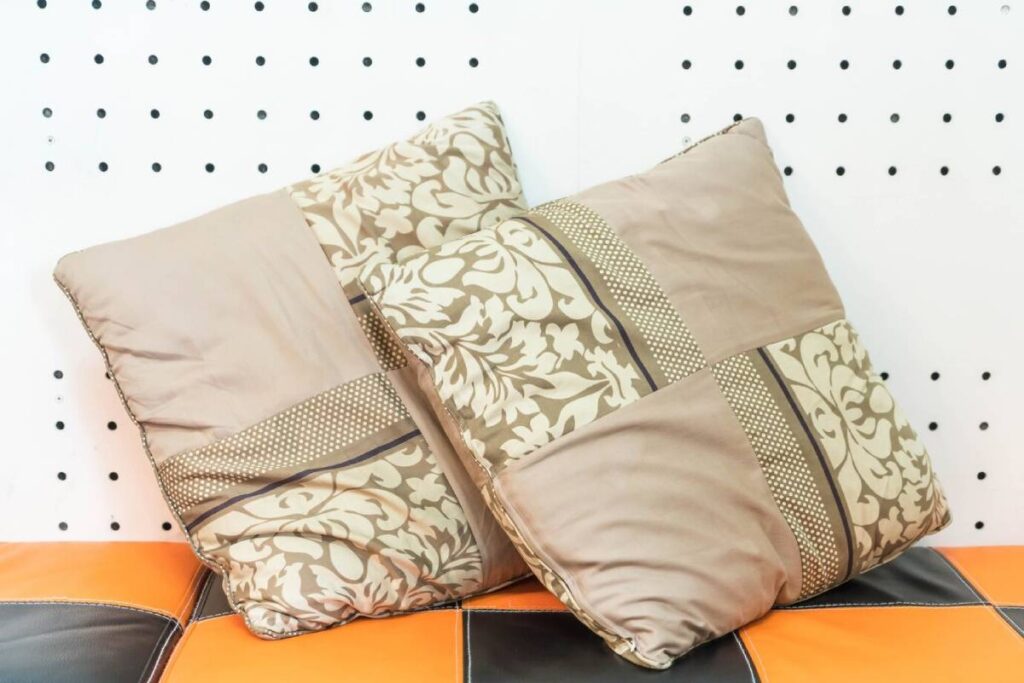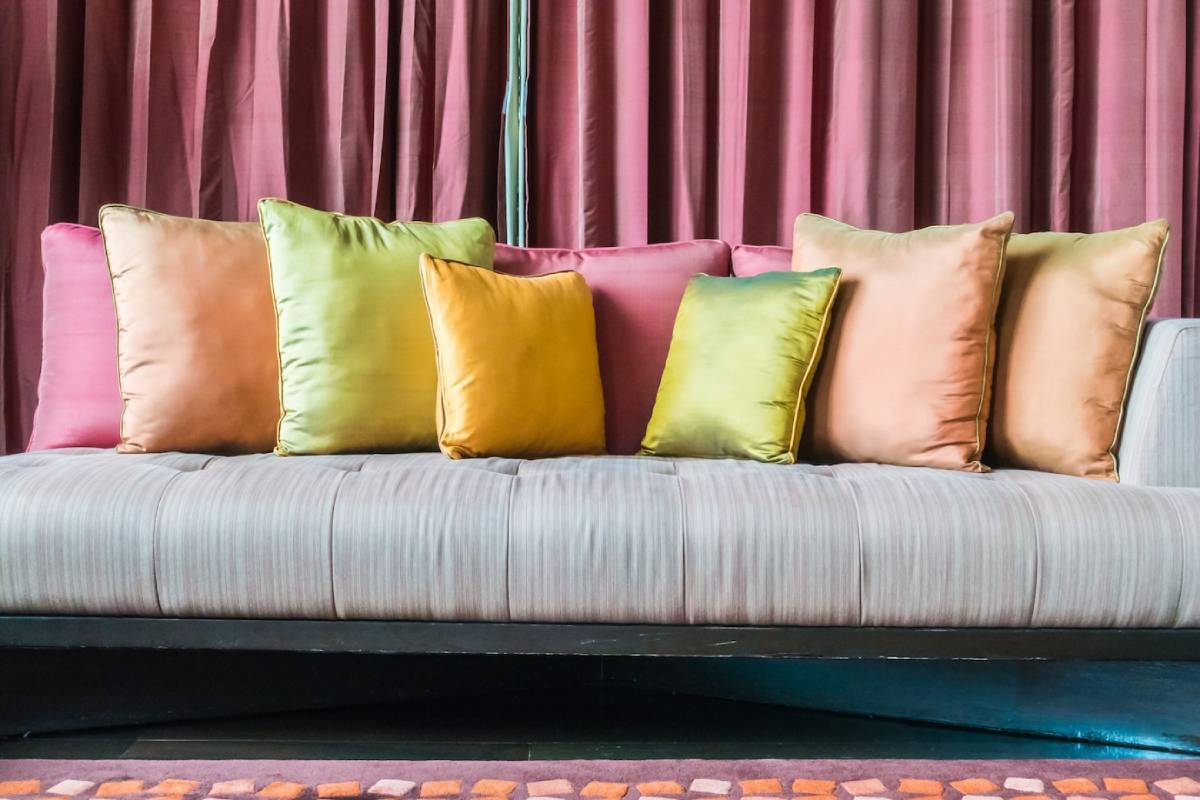The Interior Design Blog

How to Layer Textiles for a Cozy and Stylish Space
Creating a home that feels inviting, lived-in, and visually rich doesn’t always require new furniture or structural changes. Often, it’s the subtle details—textures, tones, and thoughtful combinations—that transform a space from flat to full of feeling. One of the most effective techniques? Textile layering.
By thoughtfully combining fabrics—across throws, cushions, curtains, and rugs—you can create depth, warmth, and a personalised style that speaks to you. Whether you’re working with bold colours or a neutral palette, cosy home fabrics and DIY soft furnishings allow you to shape your space seasonally and expressively.
In this guide, we explore the art of layering textiles to help you craft a comfortable, stylish space that’s as functional as it is beautiful.
Why Textile Layering Matters

Layering textiles is more than a design trend—it’s a sensory experience. The combination of textures and fabrics softens the space visually and physically. Here’s why it works:
- Adds depth and dimension without adding clutter
- Offers seasonal flexibility, easily refreshed with lighter or warmer layers
- Improves comfort with softness underfoot, behind your back, or over your shoulders
- Allows personalisation through colour, print, and pattern
- Softens acoustics in echo-prone or hard-surfaced rooms
From aesthetic to function, fabric has a powerful role to play in home design.
Where to Begin: Anchor with the Essentials
Before diving into layers, establish a base of foundational cosy home fabrics that define the tone of your space.
Start with:
- A large area rug to anchor the room and introduce colour or pattern
- Neutral upholstery (sofa, bedspread, or headboard) as a blank canvas
- Basic curtain panels in linen, cotton, or sheer blends for softness and light control
Once these key elements are in place, you can begin adding layers through accents and accessories.
1. Mix Textures, Not Just Colours
Visual interest often comes more from feel than hue. Combining contrasting textures can make even a monochromatic room feel dynamic.
Try pairing:
- Smooth linen cushions with chunky knit throws
- Woven jute rugs with soft wool overlays
- Velvet drapes against matte cotton walls
- Suede or leather accents next to sheepskin or fleece
When in doubt, follow the rule of three: layer at least three different textures in any styled corner for a well-rounded, tactile experience.
2. Use the Rule of Odd Numbers for Pillows
A classic trick for sofa or bed styling: use odd numbers of cushions—three, five, or seven—arranged by size and texture.
Combine:
- Two large square pillows in a neutral tone
- One smaller, patterned pillow
- A lumbar or round cushion for contrast
Vary the fabrics—linen, boucle, velvet—for a layered look that feels curated, not chaotic.
3. Add Throws with Intention
Throw blankets are essential to textile layering. They add comfort, colour, and seasonal variation with ease.
Placement ideas:
- Drape a throw over the corner of your bed
- Fold neatly across the back of a sofa or armchair
- Layer two throws together—one for texture, one for pattern or colour
In summer, choose lightweight cotton or gauze throws. In winter, swap in wool, faux fur, or fleece.
4. Think Vertically: Curtains and Wall Hangings
Don’t forget about fabric on your vertical surfaces. These elements bring softness to the room and can reduce echo, enhance warmth, and increase style.
Consider:
- Floor-length curtains in natural fibres for movement and softness
- Fabric wall hangings or tapestries to add colour and global style
- Hanging a vintage quilt or DIY soft furnishing as textile artwork
Curtains especially can transform a room—opt for layered sheers and heavy drapes to change the lighting and mood throughout the day.
5. Layer Rugs for Added Comfort and Style
One rug is good—two or more can be great. Layering rugs can help define areas within open spaces or add dimension to small rooms.
Rug layering tips:
- Place a larger, neutral base rug (like jute or sisal) underneath a smaller patterned or plush rug
- Use angled layers for a casual, bohemian vibe
- Keep one colour consistent between both rugs to create cohesion
This is particularly useful in living rooms, bedrooms, or dining tables where texture and style combine with function.
6. Incorporate Seasonal Switches
One of the joys of textile layering is its adaptability. Rotate textiles seasonally to match the mood and comfort needs of the time of year.
Spring/Summer:

- Light cottons, linens, or bamboo blends
- Pale tones or pastel accents
- Gauzy curtains and breathable bed linens
Autumn/Winter:
- Chunky knits, velvet, wool, or sherpa
- Warm neutrals or jewel tones
- Heavier drapes and layered rugs
Keeping a storage basket of folded throws allows you to switch items easily and invites guests to get cosy.
7. Embrace DIY Soft Furnishings
Adding your own touch to your textiles not only makes your space feel personal—it also reduces waste and can be more cost-effective.
DIY ideas to try:
- Sew your own cushion covers from fabric remnants or thrifted curtains
- Make a patchwork throw using leftover fabric scraps or old clothing
- Dye existing linens using natural methods like turmeric, avocado, or indigo
- Create a no-sew fleece blanket by knotting the edges together
- Repurpose vintage scarves as table runners or curtain tie-backs
With just a few tools and some imagination, DIY projects add another layer—of meaning as well as design.
Where to Shop or Source Textiles Sustainably

If you’re layering with intention, it makes sense to source mindfully too. Look for:
- Local makers or Etsy shops offering handcrafted or upcycled fabrics
- Natural fibre labels (look for cotton, wool, hemp, or linen)
- Thrift stores and vintage markets for unique finds
- Organic or OEKO-TEX-certified textiles for peace of mind
Choosing pieces that last, both in style and quality, aligns perfectly with cosy, conscious living.
Final Thoughts: Softness with Style
Layering textiles is one of the easiest and most affordable ways to transform your space. Whether you’re working with bold contrasts or soothing neutrals, blending textures and textiles brings personality, warmth, and depth to every corner of your home.
With a mix of curated finds and DIY soft furnishings, you can craft a home that’s both stylish and deeply personal. From pillows and throws to rugs and curtains, every layer tells part of your story—and invites others to get comfortable, too.









